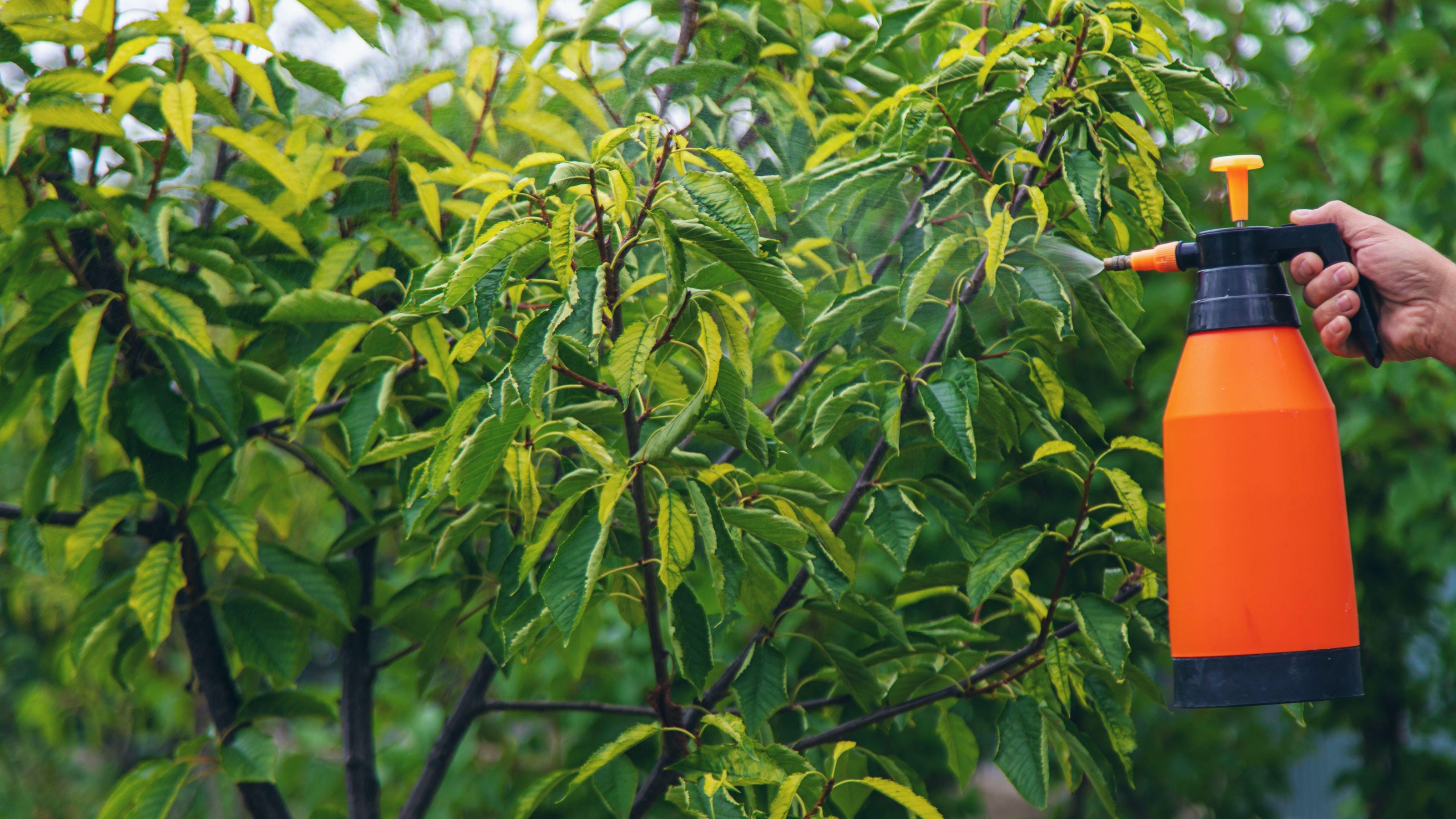Spraying Peach Trees: What To Spray On Peach Trees


Peach trees are relatively easy to grow for home orchardists, but the trees need regular attention, including frequent peach tree spraying, to remain healthy and produce the highest possible yield. Read on for a typical schedule for spraying peach trees.
When and What to Spray on Peach Trees
Before bud swell
Apply horticultural dormant oil or a bordeaux mixture (a mixture of water, copper sulfate, and lime) in February or March, or just before the buds swell and daytime temperatures have reached 40 to 45 F. (4-7 C.). Spraying peach trees at this time is critical in order to get the jump on fungal diseases and overwintering pests such as aphids, scale, mites, or mealybugs.
Pre-bloom stage
Spray peach trees with a fungicide when buds are in tight clusters and color is barely visible. You may need to spray fungicide a second time, 10 to 14 days later. You can also apply insecticidal soap spray to control pests that feed at this stage, such as stinkbugs, aphids, and scale. Apply Spinosad, a natural bacterial insecticide, if caterpillars or peach twig borers are a problem.
After most petals have dropped
This stage is also known as petal fall or shuck. Spray peach trees with a copper fungicide, or use a combination spray that controls both pests and diseases. Wait until at least 90 percent or more of the petals have dropped; spraying earlier may kill honeybees and other beneficial pollinators. If you use a combination spray, repeat the process after about a week. Other alternatives during this period include insecticidal soap for stinkbugs or aphids; or Bt (Bacillus thuringiensis) for caterpillars.
In summer time
Continue regular pest control throughout the warm days of summer. Apply Spinosad if spotted winged drosphilia is a problem. Continue with insecticidal soap, Bt, or Spinosad as described above, if necessary.
Note: Apply peach tree spray in the early morning or evening, when bees and pollinators are inactive. Also, stop spraying peach trees two weeks prior to harvest.
When autumn comes
A copper-based fungicide or bordeaux mixture applied in autumn prevents peach leaf curl, bacterial canker, and shot hole (Coryneum blight).
Sign up for the Gardening Know How newsletter today and receive a free copy of our e-book "How to Grow Delicious Tomatoes".

A Credentialed Garden Writer, Mary H. Dyer was with Gardening Know How in the very beginning, publishing articles as early as 2007.